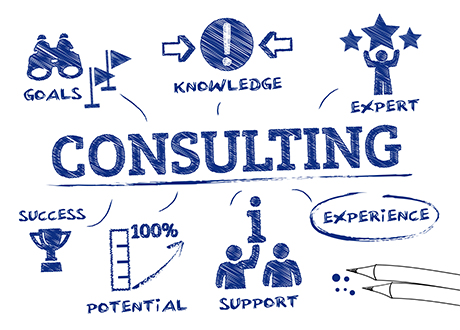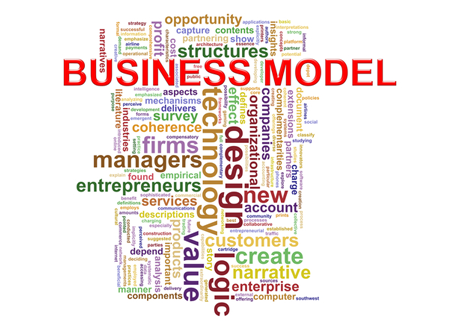Whitepaper: Stimulating and Measuring Open and Cross Innovation
As two intermediaries from Hamburg that foster open and cross innovation processes, Science Scout (an initiative of Hamburg Innovation) and Cross Innovation Hub (Hamburg Kreativ Gesellschaft) joined forces to start a discussion around the stimulation and measurement of open and cross innovation processes.
How to Select Your Best Value Innovation Project – The Secret is in a Well-Managed Product Project Portfolio!
Innovation is on everyone's lips as a solution to post-COVID economic recovery. The world of innovation has a very broad definition: It’s often referred to as an information technology innovation... but our worldwide economy is still very reliant on manufacturing. How you select your best innovation project is undoubtedly a starting point!
One Certainty in These Uncertain Times: Innovate Through Ecosystems, or Miss the Opportunity to Radically Transform Your Innovation Strategy
Hardly no one will regret 2020, it seems. Yet, 2021 ahead is hard to predict. There are hopeful signs that pave the way for a better, stronger future, but as we have now the experience, our world can go upside down almost overnight.
Don’t Fall in Love with your First Idea
In this interview, Dr. Alexander Osterwalder, Author and Co-Founder of Strategyzer, discusses what he believes to be the essential success factors of innovation and why his Business Model Canvas has become such a popular tool for organisations today.
Inventing The Future with Business Model Innovation with Alex Osterwalder
Are we still stuck in the innovation processes of the last century? On this week’s episode, Alexander Osterwalder looks at some of the fundamental problems in industries such as banking or pharmaceuticals and why the value propositions of today are not very satisfying for customers. Alex explains why the time has come to create new organizational structures and add a space where new business models and new value propositions can thrive.
Behavioral Innovation: The Need to Pivot, Why We Don’t and What We Can Do About It
When was the last time you seriously thought about your blue chip investments going broke? At what point will those shares be worth nothing? Although it may sound ridiculous, the question is serious because at the current rate of disruption, half of the Australian Stock Index S&P 500 will be replaced over the next 10 years (Anthony S D et al, 2016). Where does that leave your investments?
Brand Relevancy: Brainstorming Your Way to Business Innovation and Growth
Running a business is tough, no matter what industry you're in. Retaining loyal customers and remaining relevant are some of the biggest challenges faced by today's business owners. Fortunately, you're not alone and your company is not the first to navigate these waters.
The Best Tools to Derisk Innovation
At the start of the twenty first century the innovation buzz has become deafening. It commands the attention of everything - from the popular media to scientific journals. Innovation is claimed to be the driver of economies and the competitive edge of companies. With innovation being the core of many new management styles, one question still remains for the enthusiastic manager; what are the concrete tools for my employees to build our revolutionary innovations?
A Compelling Value Proposition: The Missing Tool in Your Lean Startup Kit
Eric Reis first introduced the concept of Lean Startup in 2008. Today Lean Startup is deployed far beyond entrepreneurial circles and is taking root in large, complex organizations looking to improve their new product success rates – and in the process build lean cultures. This is very good news. Too often the processes corporations use in pursuit of innovation can actually erode their capability to innovate. Still, when applying the principles of “Build – Measure – Learn” to initiating Lean practices in corporations, there is room for improvement…and possibly even for a pivot.
10 Ways to Reduce the Innovation Failure Rate
You are not able to stand still in this fast paced business environment, but most of the time innovation fails. Innovation process-expert Robert Cooper shows that of every seven new product/service projects, about four enter development, 1.5 are launched, and only one succeeds. Innovation is so difficult to master, indeed. I love to share with you five reasons why innovation goes wrong and give you ten ways to reduce your failure rate of innovation.
The New Form of Startup Scaling
For most startups, the biggest question haunting them today is not money but scale. According to Forbes magazine, the number one cause of startup death is premature scaling (Furr 2011). So the question on every entrepreneurs’ lips is: How quickly and when to scale? But before you answers that, I’d like to ask you why no-one seems to be concerned with the even bigger question, what is scaling all about? And what is so different now that small groups of people can create billion dollar businesses on their own?
Design Thinking + Business Model Innovation
There has been a lot of buzz around designing new and innovative business models. But what does it mean to design a new business model? How do you apply design thinking to business model innovation?
Reinventing the Consulting Business Model
The traditional consulting business model is based on two principle ideas: (1) hiring people (top talent if possible) and (2) charging clients a fee per hour or day for gaining access to this talent, its expertise and/or manpower. Depending on the type of consulting or the brand, the pendulum swings more towards focusing on providing, and buying on the customer side, the more sophisticated expertise or the simpler manpower.
The Creative Destruction of Your Job
The rise of crowdsourcing, crowdfunding, crowdtransporting, crowdletting, etc., has transformed our economy. It has also ushered in the era of the shared economy. Previously marginalized people can now contribute, no matter how small, to all walks of life. It seems to be a fantastic opportunity for the world to access the untapped skill of the crowd. But what about the people whose jobs this makes redundant? Whither the expert?
10 Guidelines for Business Model Innovation in Established Companies
Leading CEOs worldwide expect major changes to their company’s business model until 2020. As a consequence, organizations are currently about to realize that, today, business model innovation has become as important as technological innovation. However, developing new and viable business models still represents a serious challenge for large incumbent firms despite their resources, know-how, and key technologies. This article provides 10 guidelines for mastering business model innovation challenges in established companies.
Systematizing Breakthrough Innovation: Study Results
Most companies recognize the need for breakthrough innovation – it can change the fundamental bases of competition, “rewrite the rules” of an industry and transform the prospects of the successful innovator. There is no one-size-fits-all model for how best to respond to this challenge. Arthur D. Little surveyed over 80 large organizations to explore how to deliver a consistent pipeline of radically new products, performance features, business models and market space.
Risk, Great Ideas, and Your Business Model
Where do great ideas come from? Obviously they come from many sources, which means that your systematic innovation process has to support and sustain multiple efforts at ideation in parallel. In the following article we will explore some promising ways that you may be able to find ideas that will take your own business forward.
Market Mapping for Sustainable Growth
In this chapter excerpt from The Innovation Formula Langdon Morris explains how to use a map to help you locate your company in the market, to see clearly how it compares with the competition, and then to use this assessment to chart a future path toward success. The goal is to find the very best high reward, low-risk ideas that will change the market, amplify your profits, increase your relevance, and sustain your organization’s viability over the long term.
Why you Should Treat Business Model Innovation as a Fully Established Discipline
While most companies focus their innovation efforts on new products, others like Amazon and Netflix are disrupting industries with business model innovation --a cheaper, easier and more powerful form of innovation. InnovationManagement.se spoke about business model innovation with professors Netessine and Girotra, authors of the new book “The risk-driven business model”
The 7 Principles of Highly Effective Innovation Culture Change Programs (Part 2)
Nothing is more constant than change. Furthermore, the speed of change is accelerating. So for instance, the global knowledge is growing exponentially, disruptive megatrends (e.g. Internet Of Things, urbanization, demographic shifts) are shaping the innovation agendas and new approaches for capturing value by innovation (e.g. Business Model Innovation, Design Thinking) are becoming mainstream. Thus, new realities for innovation management are emerging and firms are forced to change their innovation management ever faster.
The 7 Principles of Highly Effective Innovation Culture Change Programs (Part 1)
Nothing is more constant than change. Furthermore, the speed of change is accelerating. So for instance, the global knowledge is growing exponentially, disruptive megatrends (e.g. Internet Of Things, urbanization, demographic shifts) are shaping the innovation agendas and new approaches for capturing value by innovation (e.g. Business Model Innovation, Design Thinking) are becoming mainstream. Thus, new realities for innovation management are emerging and firms are forced to change their innovation management ever faster.
How to Do Business Model Innovation for the Established Firm
This article provides a systematic framework for helping executives of large, established organizations identify opportunities for business model innovation and organize themselves to pursue these opportunities. While also applicable to start-ups, this article focuses primarily on how to define, challenge, and revamp the business model of an existing business or organization.
Take Your Business Model to the Next Level
Your business model should answer two important questions: (1) What is your value proposition and (2) how are you organizing your company and your ecosystem to create this value. The 8 building blocks of the business model template help you to visualize your answers and think strategically about your business model.
‘Borrow’ Business Models to Reinvent Your Industry
Most “new” business models are not really “new”. Very frequently they are based on replications or re-combinations of existing business model patterns. Consequently, learning from business models from other companies and industries is a very important source of inspiration for business model innovation.
The Innovation Management Maturity Model: How Do You Stack Up?
You might talk the talk of innovation. But do you walk the walk? Or, more realistically, are you doing some herky-jerky semblance of a walk that’s not getting you very far?
Red One: a blue ocean in the cinematographic camera industry
In 2005, Jim Jannard (founder of Oakley) set up a company called RED Digital Cinema, with the specific aim of creating a ultra-high definition digital camera which would be as good as the 35 mm film cameras. This very successful strategic move that changed the 100 year-old cinematographic cameras industry is analyzed here through the logic of Blue Ocean Strategy - a theory grounded in the concept of value innovation.
Open Innovation Past and Present: an Exclusive Interview with Henry Chesbrough
Though intensely talked about, open innovation remains a subject matter that both fascinates and creates apprehension among business professionals. In the following interview, Henry Chesbrough, the father of open innovation according to Wikipedia, has sat down with IM.se to discuss a few key aspects of this largely new and challenging innovation model: its evolution, its applicability and most importantly, its essential role in facilitating knowledge creation for the future. He teaches at UC Berkeley’s Haas School of Business, and Esade Business School in Barcelona.
How to Shock Management into Rethinking the Business Model – Prove They can be Blindsided by a Fingerprint
Despite a detailed process with countless hours of work, and sincere efforts to take a longer-term, strategic look at where to play and how to win, many businesses fail to anticipate fundamental shifts that should cause them to rethink their entire business model. The results are often disastrous - too many businesses end up on life support. This article presents a new concept called “Competitive Fingerprints” that will allow readers to anticipate shifts and adapt their business model to capitalize on future market realities.























